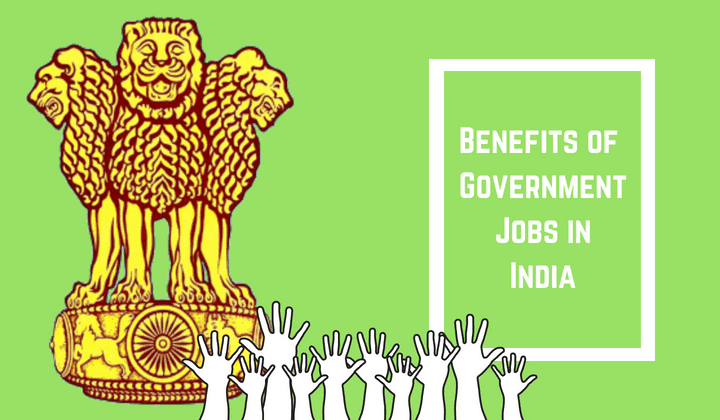Before liberalization took place in India in 1990s, there was a huge propagation in introduction of PR Consultancies that provided career opportunities for aspiring candidates.
This was the important reason behind the opening up of Indian economy for foreign investors. This attraction of foreign investors also brought with it the PR culture.
With a view to attract positive opinion from the public and for fighting against the lobbies that were anti-foreign investments, the businesses in India were in need of positive support from media.
With this scenario that continues even today, it is expected that there will be a great increase in the demand for experts, who can handle media relations, public affairs and advocacy.
Even, it is expected that there will be new courses in the area of public relations in universities and other institutions in India.
Hundreds of firms operating in the field of Public relations are thronging colleges and universities for campus interviews to hire the right talents with aspiration towards a career in public relations.

Tools needed for maintaining effective media relations
Experts are of the opinion that the following tools will be required for maintaining effective media relations:
- Issuance of news releases
- Arranging for news conferences
- Holding media briefings
- Making arrangements for media visits or facility tours for media professionals
These tools can be followed both as preventive measures and even after the crisis situation has occurred.
How to define media relations?
Media relations involve developing a sustainable, credible and professional relationship with media people. This is an area that involves working on different formats of media like online, electronic and print media.
The goal of exercises with respect to PR will vary, but the outcomes are highly tangible in the form of coverage at different platforms for news broadcasting. In general, the ultimate aim of media relations is to get an advantageous information published or telecast.
However, the field of media relations can go a long way than just functioning as a publicity tool.
An expert in the field of Media Relations working for Griffith University named Jane Johnson has stated in her book that it is about establishing professional relationships, understanding the way in which your professional counterparts act and also knowing the deadlines and timeframes followed by another profession.
She has also stated that it is all about using media as an indicator of society and as the foundation stone for your own initiatives.
How about media environment in India?
Experts are of the opinion that the Indian market is different from the market environment in many other developed countries in the following ways:
India is a developing nation and all segments of media industry inclusive of print and radio in this nation are still growing as against many other developed nations.
Even though, the mass media field has experienced an impressive growth in India, it is still being dominated by large groups, which exercise a considerable amount of interest on what is to be published on newspapers and English dailies.
Even, in India, there are different issues related to media ownership, which means cross media ownership, corporate ownership of media, ownership by political parties and monopolistic trends in ownership.
Media companies in our country also have different interests like subsidiary business interests in sectors like real estate, information technology, cricket, textiles, automobiles, education, steel, shipping, cement, hotels and aviation. For instance, one of the largest media groups in India owns nearly 7 newspapers, 17 radio stations and 2 magazines and this company has significant presence in other industries like solvent extraction, power generation, real estate, hotels, oils, textiles, printing and many other fields.
A report states that the Board of Directors of many media companies in India have representatives from big corporate entities that are marketers.
How about Media growth in India?
- In the year 2006, the television industry experienced a growth of Rs. 18300 crores and this sum has reached a mark of Rs.50,140 crore in the year 2014.
- Presently, the number of television channels is 788 and this number was just 130 in the year 2004.
- The radio industry has experienced a growth of Rs. 1540 crores this year from the mark of Rs.600 crores.
- In the year 2005, there were 245 FM channels in 85 cities in India. In the next phase, it is proposed that there will be 839 FM channels in 294 cities in the nation.
- Even, the community radio stations experienced a considerable number of increase in this nation.
Growth of media and entertainment industry:
- Due to the economic slowdown, the media and entertainment industry experienced a moderate 12% improvement in the year 2013 as compared to the improvement of 12.6% experienced in the previous years.
- Due to the impact of new launches and state elections, the regional markets performed well in the print media industry, which experienced a growth at the rate of 8.5% in the year 2013.
- In the previous years, the new media industry had 124 million internet users and this number has reached 214 million mark in the year 2013. In this 214 million mark, about 130 million users accessed the internet through their mobile phones.
- The number of mobile internet users dominated the total internet users in this nation capturing a share of 61%.
- The digital media advertising industry in the nation, developed at a faster pace as against any other category of advertising. As compared to a 30% improvement in the year 2013, it is expected that there will be a 35% improvement in the year 2014.
How to build effective media relations?
The ability to recognize what is newsworthy is the key towards succeeding in the media relations field. The professionals working in this field should be in a position to understand how to generate attractive material and how to anticipate journalistic enquiry.
The professionals operating in this field should also act as internal reporters, wherein they should package the events taking place in his/her organization as a news story to grab the attention of media and should try to convey positive messages.
Developing friendly relationships with journalists can go a long way in seeking the attention and understanding of media, which will help further in supplying timely and useful information.
Here, the important point to remember is that credibility is the key for effective networking. The PR professionals should be in a position to establish/develop credibility with a view to develop meaningful and long-term relationships with media.
Traits for a successful career in media relations:
To become a successful professional in this field, an individual should possess the following personal traits:
- An active interest in media
- Keeping updated at current affairs and general knowledge
- Good knowledge of client’s/company portfolio
- Good command over spoken and written English, Hindi and the regional language in the state in which the individual practices
- Proficiency in the field of research
- Rigor, diligence and hard work to maintain deadlines
- Confidence and composure when handling crisis communication
- Belief in professional code of ethics, unflinching integrity and honesty
- Sharp reflexes
- Good at interpersonal relationships.
To sum up, this is a field that has tremendous career prospects and growth potential for candidates with UG/PG degree in mass communication/journalism or public relations. When they possess the above-mentioned traits, they can sure enjoy a great career in this field.





